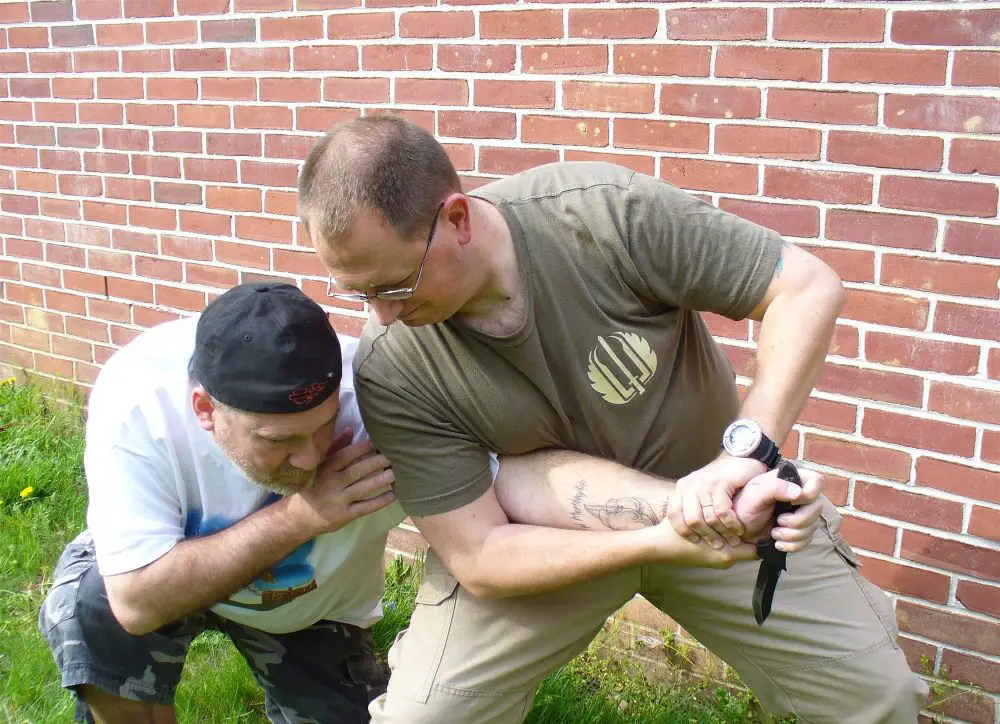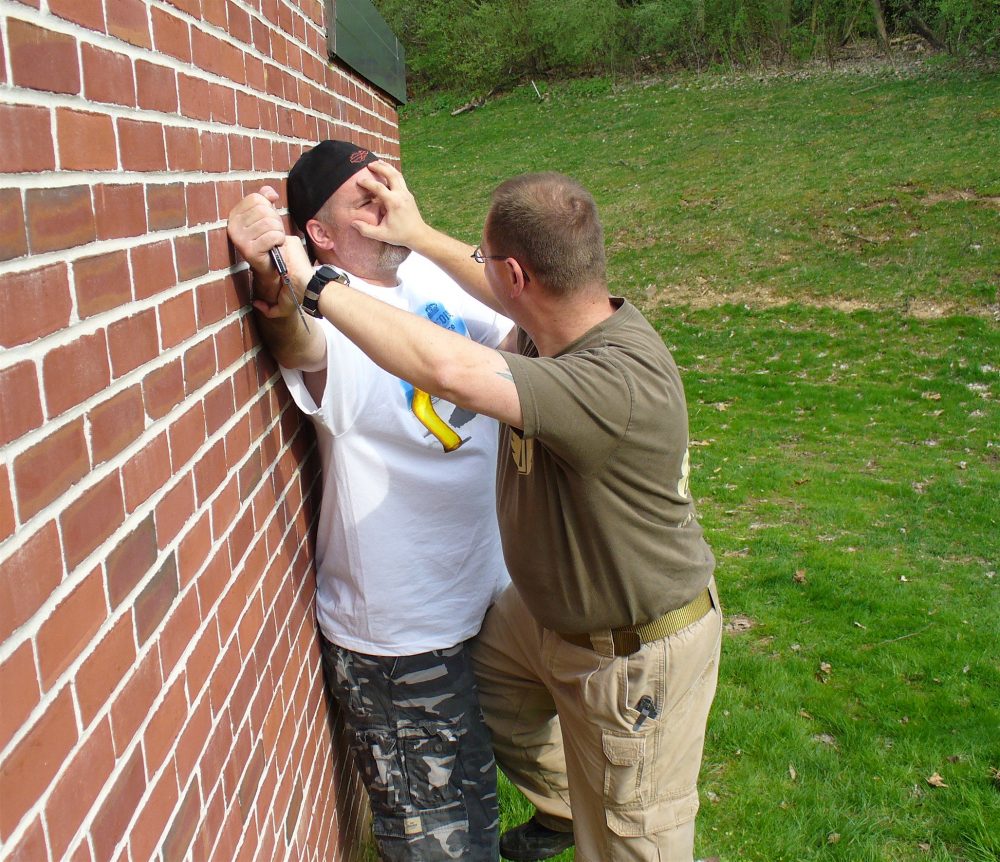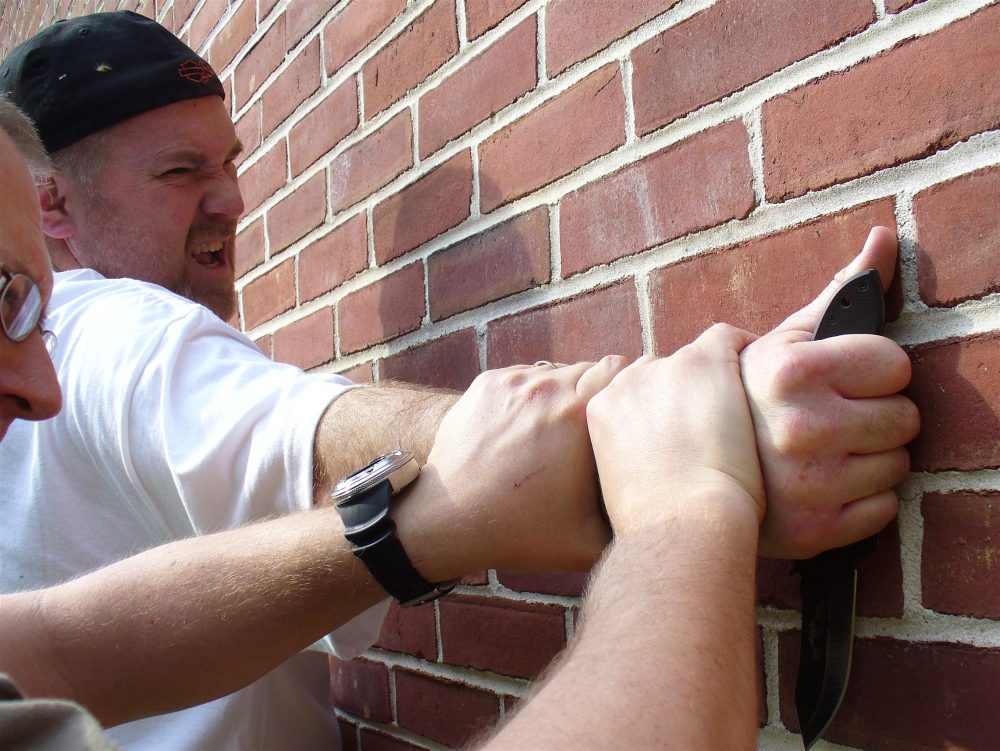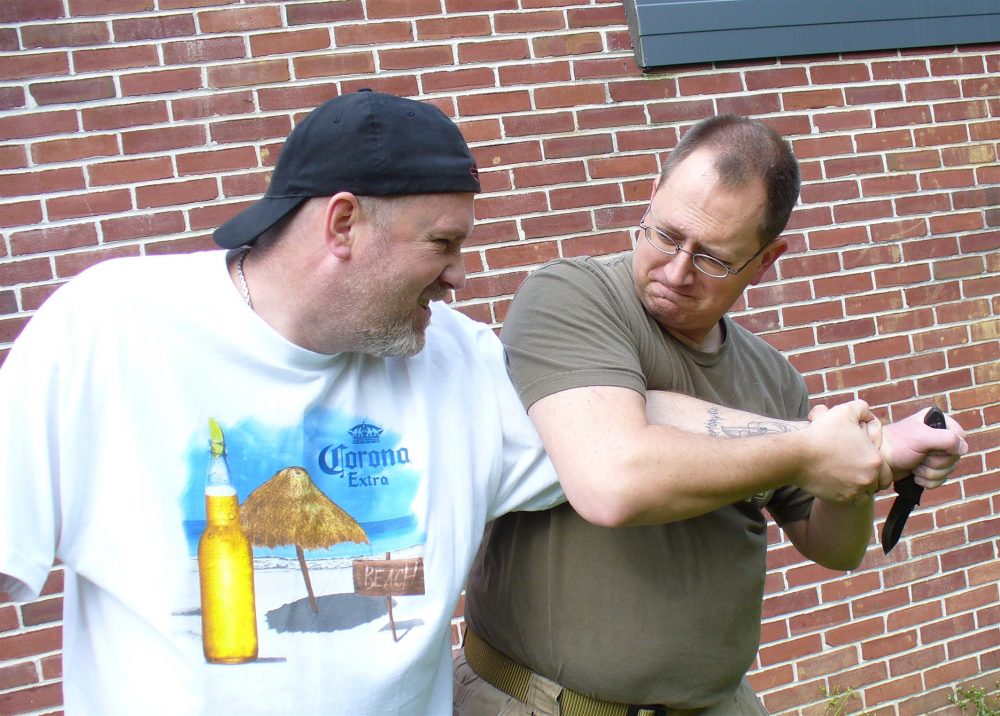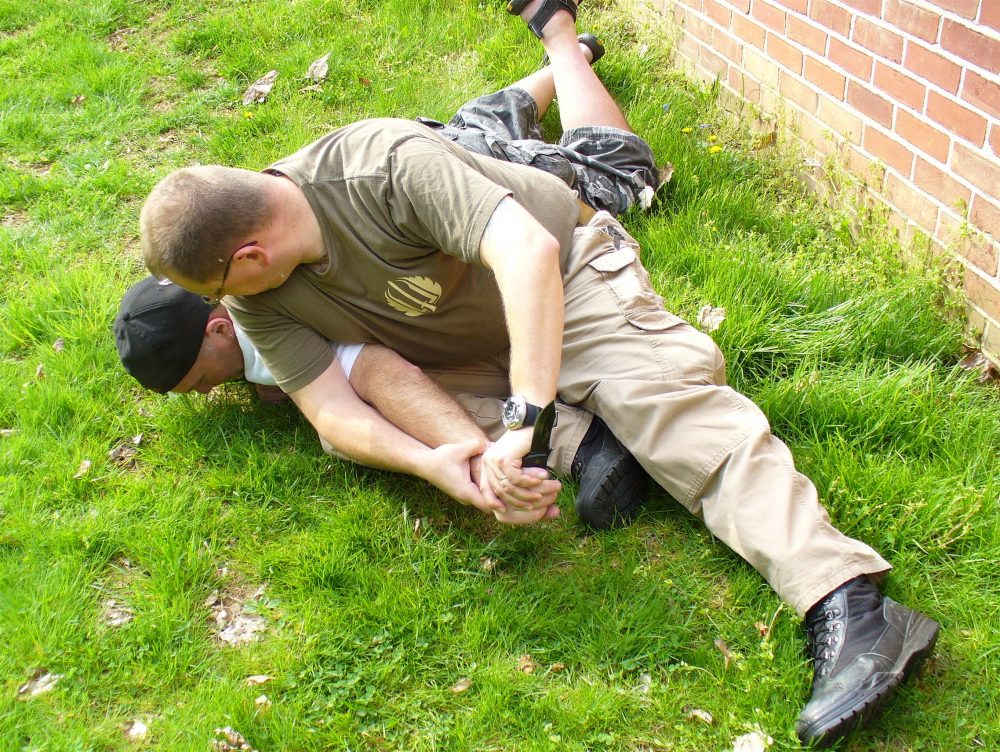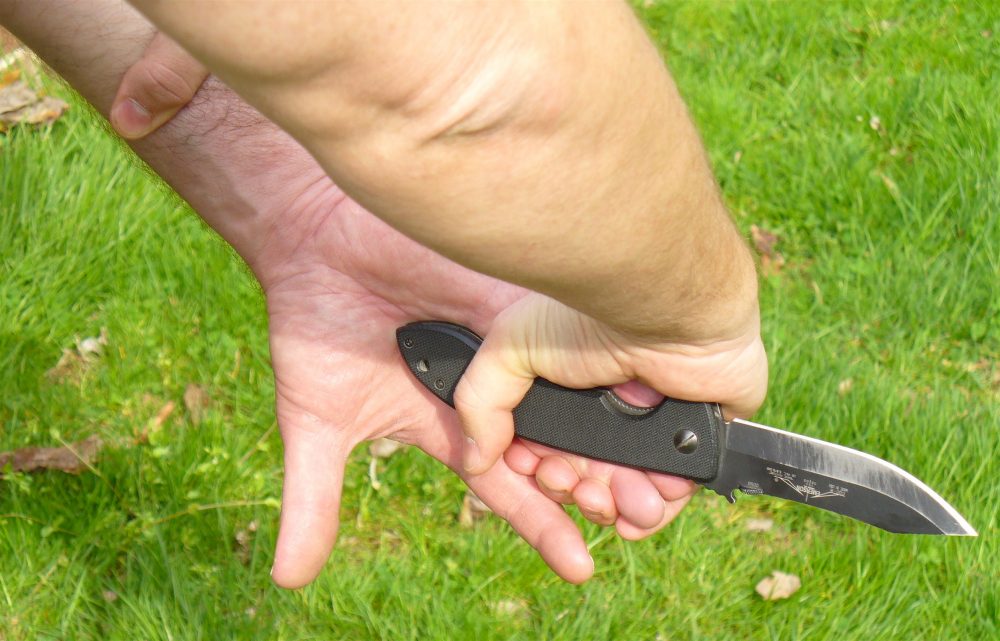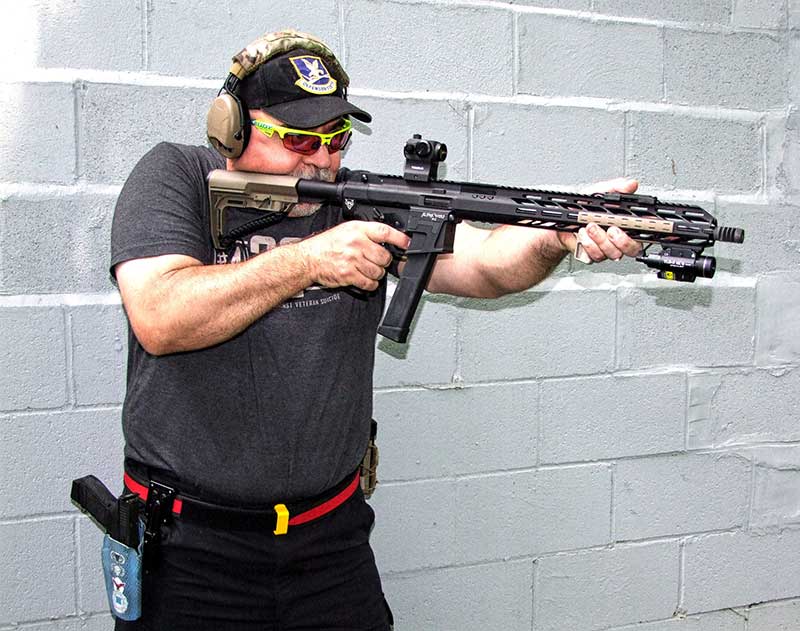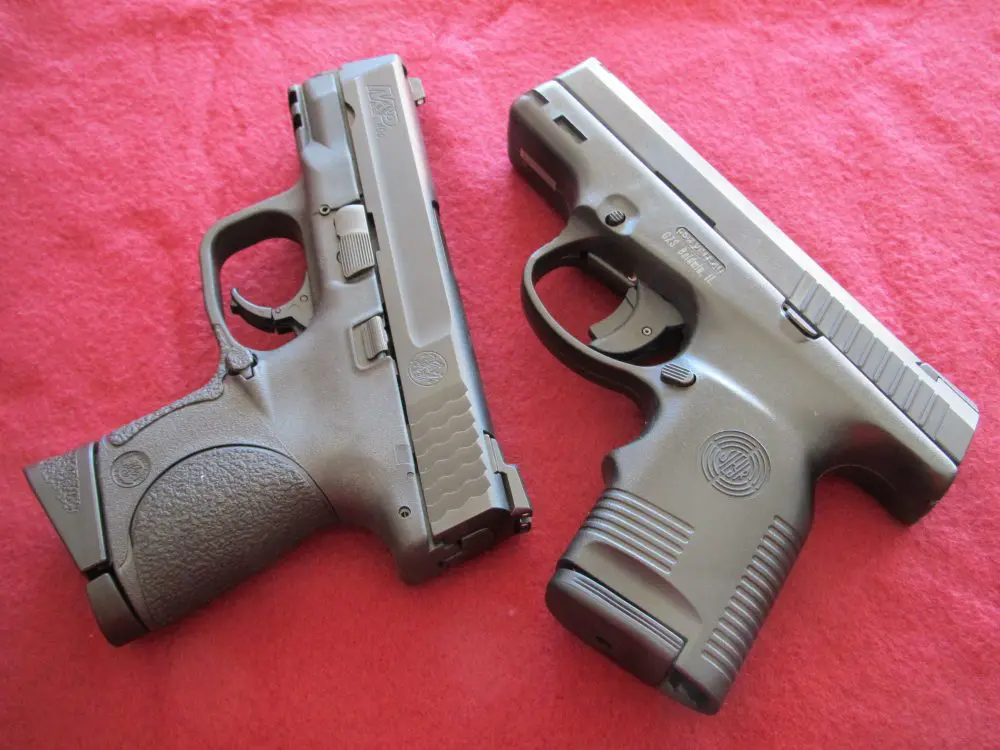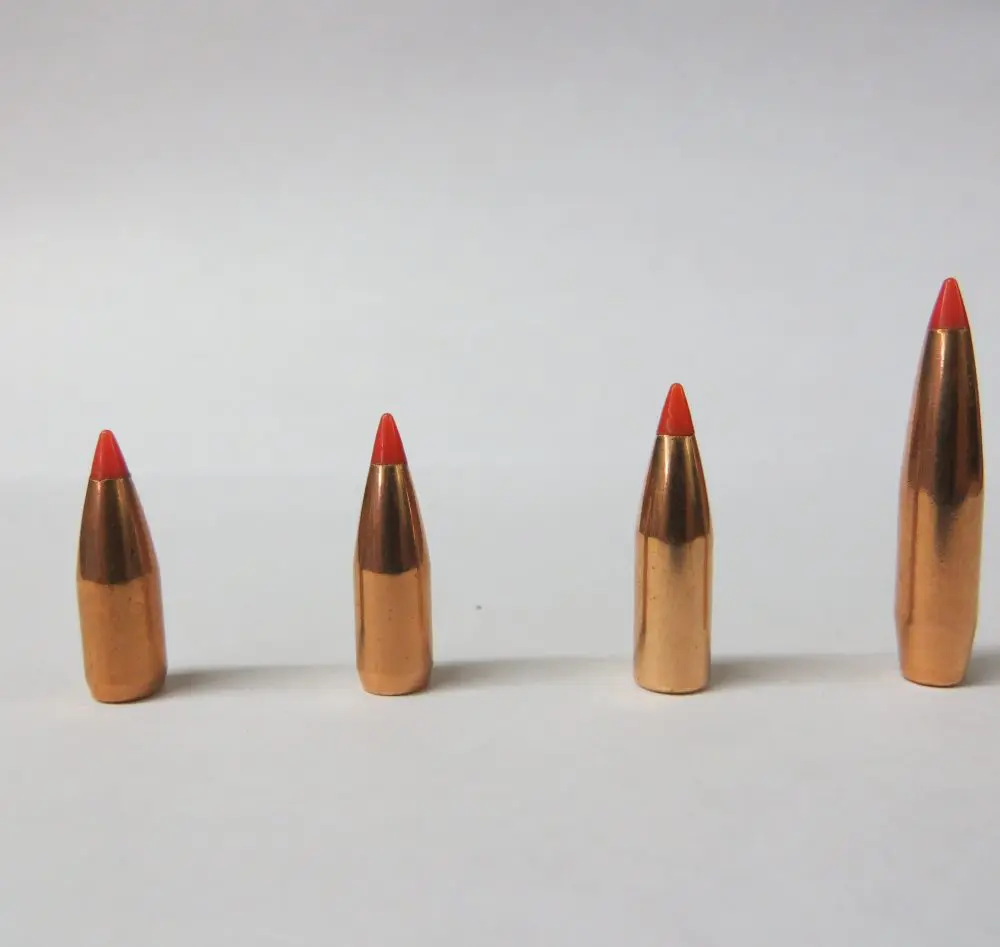Being a corrections officer who has spent the past 17 1/2 years in one of the largest prisons in the U.S., I’ve had occasion to witness many inmates attacking each other with various homemade weapons. I have also been on the receiving end of these same weapons more than once.
Much of the information given in this article will be of benefit not only behind the walls of our correctional institutions but also on the street.
In prison, altercations occur daily, often with some type of weapon being utilized. Sometimes, convicts don’t want to leave an enemy alive to be able to retaliate later, so they go for the kill initially.
Prison-made “shanks” or “shivs” can be manufactured from a multitude of items: a metal slat broken from a bed frame; shards of metal taken from maintenance shops; or the metal push rods used on sink spigots, which can be unscrewed and sharpened. I witnessed a fatal attack with a pair of shears one day. The possibilities are endless. Consider that the inmate population has nothing but time on their hands—and there are some very imaginative inmates housed in our correctional facilities.
For working in close, it’s hard to beat elbow and knee strikes. Alternate strikes high and low don’t stop until the attacker ceases to be a threat.
Non-metallic shanks are also popular: Plexiglas and Lexan are often smuggled back from workshops to a cell, where they can be honed on the concrete floor into a deadly weapon that has the advantage of being undetectable by the many metal detectors commonly set up inside prisons.
A simple toothbrush handle can be honed to a sharp point that can be thrust into a throat or eye socket. The toothbrush handle is often heated and softened, and convicts press razor blades into the soft plastic and let it cool. Presto! Instant straight razor. Even plastic “cling” wrap can be melted with matches or a lighter, and molded into a shank; when it cools, it becomes hard and pointed. Newspaper, when moistened and shaped into a pointed spear, will harden when it dries, and can take an eye out when a hapless officer is walking past an inmate’s cell.
Inmates will sometimes take apart a ball-point pen (the type with the push-button plunger), sharpen the tip of the shaft, and use the barrel of the pen, along with its spring, to launch the sharp ball point at an officer’s face. Many times, the “dart” has been dipped into disease-infected blood, such as that infected with Hepatitis or HIV/AIDS.
Sharpened, pointed toothbrush and broken handle of a five-gallon bucket are examples of prison shanks. Though not as “sexy” as the Emerson CQC-8 or the Strider GB, these shanks can produce punctures and cause serious internal bleeding.
Table of Contents
WHY USE A KNIFE?
A few advantages to criminals (inside or outside prison) of using knives as weapons are that they’re readily available, they’re often free or cheap, and no permit is needed to buy one. They can be easily disposed of, as well.
Knives can also have a psychological impact on the victim. Having faced knives being wielded by criminals, I can personally testify that it is a terrifying experience! Facing an edged weapon in real life is completely different than doing so in training—there really is no comparison. Moves that you might have complete confidence in while working out with a partner in the dojo may not give you the same confidence when used against someone trying to kill you. You may very well find yourself thinking, “Am I 100% certain this is going to work, because if it doesn’t, I’m going to be seriously injured or killed?” Believe me, it will take you off your square, and your techniques will be not be as smooth or as efficient as they are in training. That is, if you can access them at all under the type of stress and adrenal dump that you’ll be facing when an armed attacker attempts to kill you.
METHODS OF ATTACK
Criminals like to make certain that their attack is going to succeed by carefully assessing their prospective victim (this is called an “interview” by at least one authority I’m aware of). The criminal wants a victim who won’t fight back, and/or who can be caught by surprise. Complacency on the victim’s part can be deadly.
For these reasons, nearly every edged weapon attack I’ve ever witnessed has been of the ambush variety, with the majority coming from behind. When dealing with career criminals, there is no such thing as a “fair fight.” It does not happen. Period.
In nearly every one of the fatal attacks that I’ve been privy to (several dozen in number), the attacker utilized stabs (usually to the head, neck, and upper torso) as opposed to cuts, to dispatch his victim. Stab wounds are much worse than cuts, in that internal organs can be reached, internal bleeding is facilitated, and stab wounds are more difficult to treat. In short, stabbing is more likely to cause physical collapse than cuts, since stab wounds are more like bullet wounds, causing more blood loss and lowering blood pressure, which leads to physical collapse. I am not implying that cuts are harmless, as people have certainly been seriously cut and died as a result. It’s just that this is rarer.
In taking a victim by surprise, the predator has the greatest opportunity for success, while minimizing his own chances of being injured. Whether on the street or in prison, being injured can sometimes be a death sentence in and of itself, as other predators will smell the weakness—like sharks smelling blood in the water—and often similarly move in for the kill.
After running your attacker full speed into the wall, rake his face, gouge his eyes, slam his knife hand into the wall and administer a bit of testicular trauma.
“DON’T BRING A KNIFE TO A GUNFIGHT”
I wish I had a dime for every time I’ve heard that old cliché. Many people don’t realize just how flawed—and deadly—that thinking can be.
One of the great virtues of wielding a knife is its close-range effectiveness and speed into action. Just yank and shank! Remember, our attacker knows what he’s going to do to us before we do. We will be reacting (on the defensive) from the start, and action beats reaction almost every time.
All it takes is for the assailant to land one stab into your neck, and every gun in the world will not help. Merely carrying a gun is not the magical assurance of safety that the “Don’t bring a knife to a gunfight” crowd believes it is. In all likelihood, you will have to fight, at least briefly, with empty hands in order to deploy your firearm—if you’re even carrying one, that is.
We must count on being cut or stabbed if we have to fight a knife-wielding attacker. It’s the unfortunate, sad truth, but if we mentally get used to the idea now, it might not come as such a shock if the time ever comes.
I’ve been fortunate (probably very fortunate), in that I’ve faced edged weapons directly on at least three occasions, and don’t have any scars or extra holes in my skin to show for it. I’m the exception, and I imagine this is largely because I’ve paid attention to warning signs around me.
A fellow officer with whom I work was stabbed twice in the back on duty while breaking up a fight between inmates in a cellblock. It wasn’t until minutes later—when someone else pointed out that he was bleeding—that he realized he’d been stabbed. Fortunately, he recovered from his injuries.
The physical damage that some people can sustain and continue to function often amazes me. In fact, many people who are seriously injured don’t realize it until some time later. That is one of the reasons why stabbing is more effective than cutting—it causes the loss of blood pressure more quickly, and that’s often what ends a fight, because that’s what causes the stabbed person to go down, whether he wants to or not.
When you get control of his weapon hand, take him for a ride into a wall or anything solid that you can use to your advantage. Be ruthless and brutal. Defend as if your life depends on it—because it does.
PREVENTING ATTACKS/RESPONDING TO ATTACKS
All of this sounds pretty grim thus far. So, how can we avoid attacks?
The best avoidance measure I know is to be vigilant and alert! Everything that people do is for a reason: watch their hands closely. Why does that guy over there have his hands in his pockets? Does he have a weapon there? How about the guy who just moved closer behind me? Is he setting me up for an attack? Why has he moved so closely? Does he seem nervous? Is he avoiding eye contact? Is he easing closer to me? We must constantly observe and evaluate those around us. Watch their eyes. Keep an eye out for emotionally disturbed persons, as they can be incredibly unpredictable. The above things are happening for a reason—don’t ignore these signs!
First priority is to control the attacker’s weapon hand. If you fail to do this, he’s free to continue stabbing and/or slashing. Grab that hand and do not let go!
Next, sink your body weight into him while still maintaining control of the weapon hand. If pain compliance on his elbow is not effective, the leverage you utilize will be. Be mindful of where the blade is pointing.
On the ground, continue to use your body weight to your advantage.
Finally, strip the knife away from the attacker’s hand. You will probably be cut while doing this, but it sure as hell beats a knife sticking out of your lower intestine! And remember, just because you have disarmed the attacker does not mean the fight is over!
WHAT TO DO?
Even if you remain alert, an attack is still possible. What can we physically do in the event of being attacked by someone wielding a knife?
The first and most important thing is to move off the attacker’s centerline. This can buy some time to further maneuver, think, or draw a weapon (if you have one). Getting off the centerline will momentarily move us out of the attacker’s “line of fire.”
Moving to the attacker’s outside, if possible, is the best direction, as it will take the attacker more time and energy to redirect his attack back toward you. Also, moving away at the same time you’re moving off the centerline will create distance in addition to the angle advantage. You’ve now put yourself in a much safer position.
If you have no other choice, and have to physically engage a knife-wielding attacker, it’s prudent to try to get something in between you and the attacker, such as a chair or other object. If you have no weapons, try to gain control of the attacker’s weapon hand, using his momentum/energy against him, by redirecting him away from you. If possible, slam the weapon hand into something solid, such as a wall or table, in an effort to make him drop the knife. I’m a firm believer in utilizing solid, inanimate objects to stun the attacker and make him stop his assault. Don’t rely on fancy, intricate disarming techniques. They look neat in practice, but many will get only get you hurt in actual combat.
If you have a weapon, such as a baton, attempt to strike his weapon hand. Doing so will possibly cause the attacker to drop his weapon, if not from the pain, then from the broken bones he’ll likely suffer. You need to do whatever you have to, including biting or eye gouging. At this point, you’re fighting for your life!
There are no perfect answers or solutions that will work every time. Those who claim to have them are merely snake oil salesmen. Beware of receiving instruction on edged weapon defense from those who’ve never faced such weapons in real life, because it’s akin to taking swimming lessons from someone who’s never been in the water. I know dozens of martial arts instructors who claim to have all the answers necessary to defend against attacks of this nature, and who have never actually be involved in a real fight, much less an edged weapons attack. Most have never even seen this kind of attack, and yet consider themselves qualified to instruct others on how to survive. Seek instruction from someone who has “seen the elephant.”
Finally, to those corrections officers who work behind the walls—seek training in these subjects if at all possible. We’re forced to work completely unarmed most of the time while inside the walls, fighting the monsters that society has banished. Facing the blade is no fun, but if we prepare ahead of time, we increase our chances for survival. Good luck.
[Jim Davis served as a corrections officer for sixteen years in one of the largest prisons in the United States, where he still works. During this time, he served for nearly a decade on CERT, including two years as a sniper. He’s currently an instructor in Defensive Tactics, Immediate Responder, and various other courses. Jim has witnessed and/or been involved in a large number of edged weapon confrontations while on duty.]
